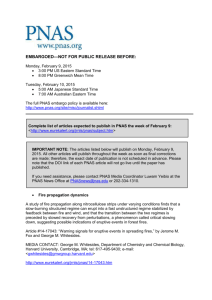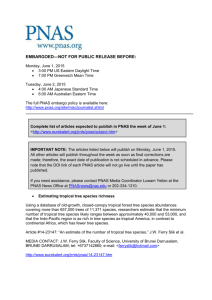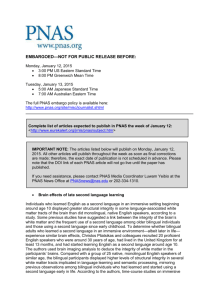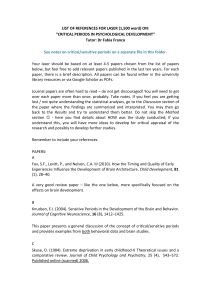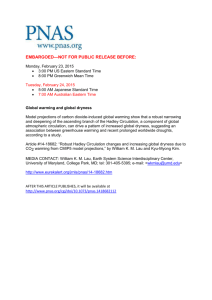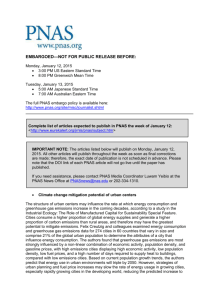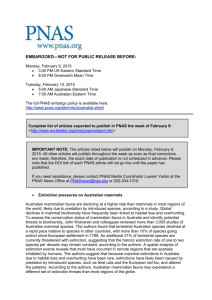Media Release
advertisement
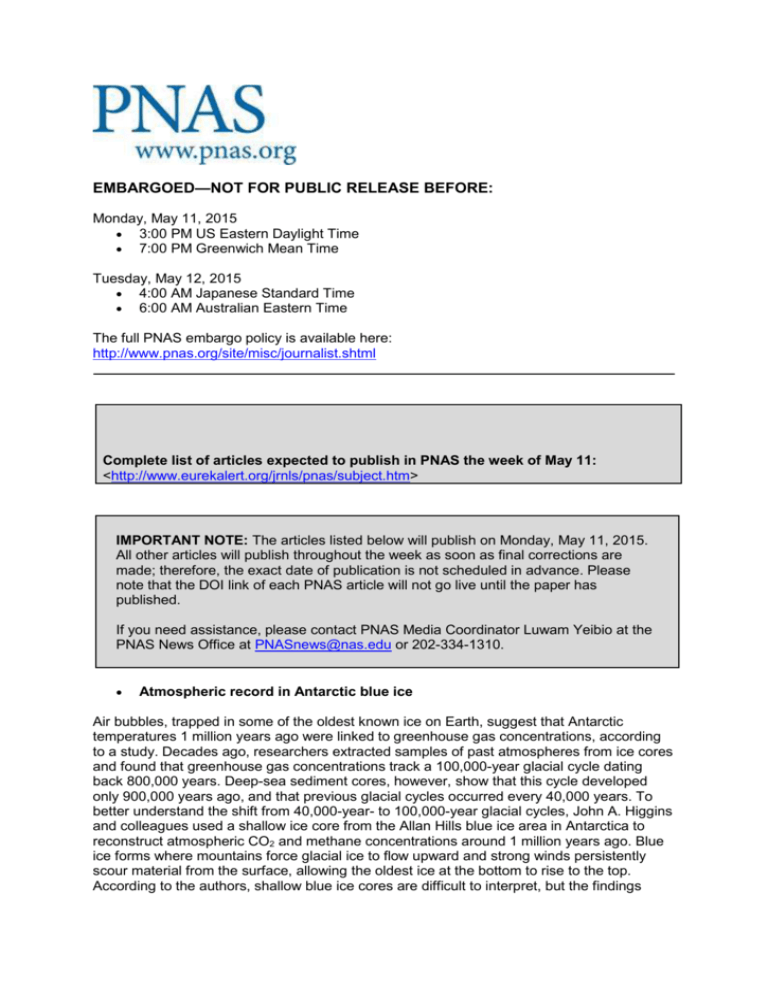
EMBARGOED—NOT FOR PUBLIC RELEASE BEFORE: Monday, May 11, 2015 3:00 PM US Eastern Daylight Time 7:00 PM Greenwich Mean Time Tuesday, May 12, 2015 4:00 AM Japanese Standard Time 6:00 AM Australian Eastern Time The full PNAS embargo policy is available here: http://www.pnas.org/site/misc/journalist.shtml Complete list of articles expected to publish in PNAS the week of May 11: <http://www.eurekalert.org/jrnls/pnas/subject.htm> IMPORTANT NOTE: The articles listed below will publish on Monday, May 11, 2015. All other articles will publish throughout the week as soon as final corrections are made; therefore, the exact date of publication is not scheduled in advance. Please note that the DOI link of each PNAS article will not go live until the paper has published. If you need assistance, please contact PNAS Media Coordinator Luwam Yeibio at the PNAS News Office at PNASnews@nas.edu or 202-334-1310. Atmospheric record in Antarctic blue ice Air bubbles, trapped in some of the oldest known ice on Earth, suggest that Antarctic temperatures 1 million years ago were linked to greenhouse gas concentrations, according to a study. Decades ago, researchers extracted samples of past atmospheres from ice cores and found that greenhouse gas concentrations track a 100,000-year glacial cycle dating back 800,000 years. Deep-sea sediment cores, however, show that this cycle developed only 900,000 years ago, and that previous glacial cycles occurred every 40,000 years. To better understand the shift from 40,000-year- to 100,000-year glacial cycles, John A. Higgins and colleagues used a shallow ice core from the Allan Hills blue ice area in Antarctica to reconstruct atmospheric CO2 and methane concentrations around 1 million years ago. Blue ice forms where mountains force glacial ice to flow upward and strong winds persistently scour material from the surface, allowing the oldest ice at the bottom to rise to the top. According to the authors, shallow blue ice cores are difficult to interpret, but the findings suggest that CO2 and Antarctic temperatures were linked in the warm world of the MidPleistocene, according to the authors. Article #14-20232: “Atmospheric composition 1 million years ago from blue ice in the Allan Hills, Antarctica,” by John A. Higgins et al. MEDIA CONTACT: John A. Higgins, Department of Geosciences, Princeton University, NJ; tel: 609-258-7024; e-mail: <jahiggin@princeton.edu> http://www.eurekalert.org/jrnls/pnas/14-20232.htm
